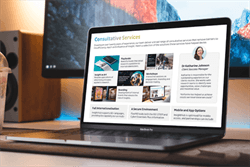In recent years, companies have embraced artificial intelligence (AI) at pace, swept up in a technological momentum that promises efficiency and cost savings. However, in their rush to pursue quickly evolving AI tools, companies sometimes overlook the importance that consumers place on the human elements of their interactions with companies. This was apparent in December 2024, when Spotify faced a backlash for launching AI-generated year-end playlists and summaries that many users found emotionally tone-deaf and impersonal. Similarly, Coca-Cola’s AI-generated Christmas advert was criticised by consumers who perceived it as cold and lacking the emotional resonance typically associated with the festive season.
These reactions speak to a deeper issue: companies’ increasing deployment of AI is often divorced from a grounded understanding of what their customers actually value and want. The consequence is an erosion of trust, connection, and engagement, stemming from the absence of customer salience in companies’ decision-making processes. Insight teams can play an important role in creating a culture of Customer Salience within companies, creating opportunities for a customer-led transformation that will allow companies to maximise the potential for AI tool use in a way that resonates with their customer base in a positive way.
Disconnected priorities: hurdles in the race of AI integration
Fundamentally, many consumers value and seek out human interaction. Whether it’s speaking to a real person when resolving an issue, feeling heard in feedback channels, or receiving empathetic service during a complex transaction, human touchpoints remain essential. AI tools, when deployed indiscriminately, risk stripping these away. The perception, for many, is that AI eradicates, rather than enhances, the human element when engaging with companies.
Furthermore, this perception is not solely driven by what AI does, but by what consumers think it does. Many consumers lack a clear understanding of how AI works, where it’s used, and why. This lack of understanding is often gives way to suspicion or anxiety when engaging with AI, or assumptions about the loss of authenticity when engaging with a company. Without transparency and education, AI becomes a symbol of corporate detachment rather than innovation.
Whilst AI tools present opportunities for innovation and benefits, companies’ indiscriminate deployment of such tools demonstrates the lack of a full and complex understanding of consumers at the heart of decision-making processes. A blanket rollout of AI that disregards customer preferences or concerns risks eroding trust and driving disengagement.
The vital role of insights teams
So, how do companies avoid falling into the trap of implementing AI for AI’s sake? The answer lies in creating a culture of Customer Salience within a company, embedding customer-led insights in the heart of decision-making, in which insights teams have a vital role to play in delivering.
The first step is for insights professionals to undertake original research with their own customers. This is not about general sentiment towards AI in society; it is about how your customers feel about AI integration with your company, in specific contexts of customer engagement with your company. What do your customers fear? What do your customers value? Where do customers welcome automation, and where do they want to speak to a human? And why does that demarcation of contexts of AI versus human interaction matter to customers?
Such research allows insights teams to surface nuanced concerns, whether ethical, emotional, or practical, that generic data will never capture. Just as importantly, it can also reveal new opportunities for meaningful AI integration. When designed and implemented with customer input, AI tools can genuinely improve experiences: speeding up routine tasks, offering personalised recommendations, or enabling 24/7 support that complements, rather than replaces, human service.
However, uncovering these insights is only half the battle. They must be embedded into the organisation through a culture of customer salience. This means ensuring that customer insight is not an afterthought or a one-off report, but a core driver of business strategy. AI adoption should follow insight, not the other way around. Stakeholders must be supported to understand what their customers really value and to resist the hype that often surrounds emerging technologies. In short, insight must be louder than innovation for innovation’s sake.
A customer-led transformation of AI integration
In many organisations, a culture of AI has been embedded in recent years, driven by excitement, external pressure, or perceived competitive necessity. But it’s time to shift the narrative. Instead of allowing AI to shape the customer experience unchecked, insights teams have an opportunity to champion customer-led insights, creating a culture of customer salience instead.
Creating this culture of Customer Salience with a company requires more than just delivering reports. It requires proactive engagement with stakeholders across the business, helping them see customer insight as integral to innovation. It means creating opportunities and forums in which decision-makers hear directly from the voice of the customer. Connecting stakeholders to customer insights in this way helps to, in turn, drive stakeholder engagement and trust in the value of insights and insights teams.
Companies that listen to their customers, understand their concerns, and embed customer-led insights at the heart of AI strategy decision-making will not only avoid missteps like those seen at Spotify and Coca-Cola, but they will set themselves apart in a crowded market by delivering experiences that resonate and build loyalty. Insights teams are integral to the creation of this culture of customer salience, maximising opportunities for effective AI integration to enhance customers’ experiences and positive engagement with a company.


















